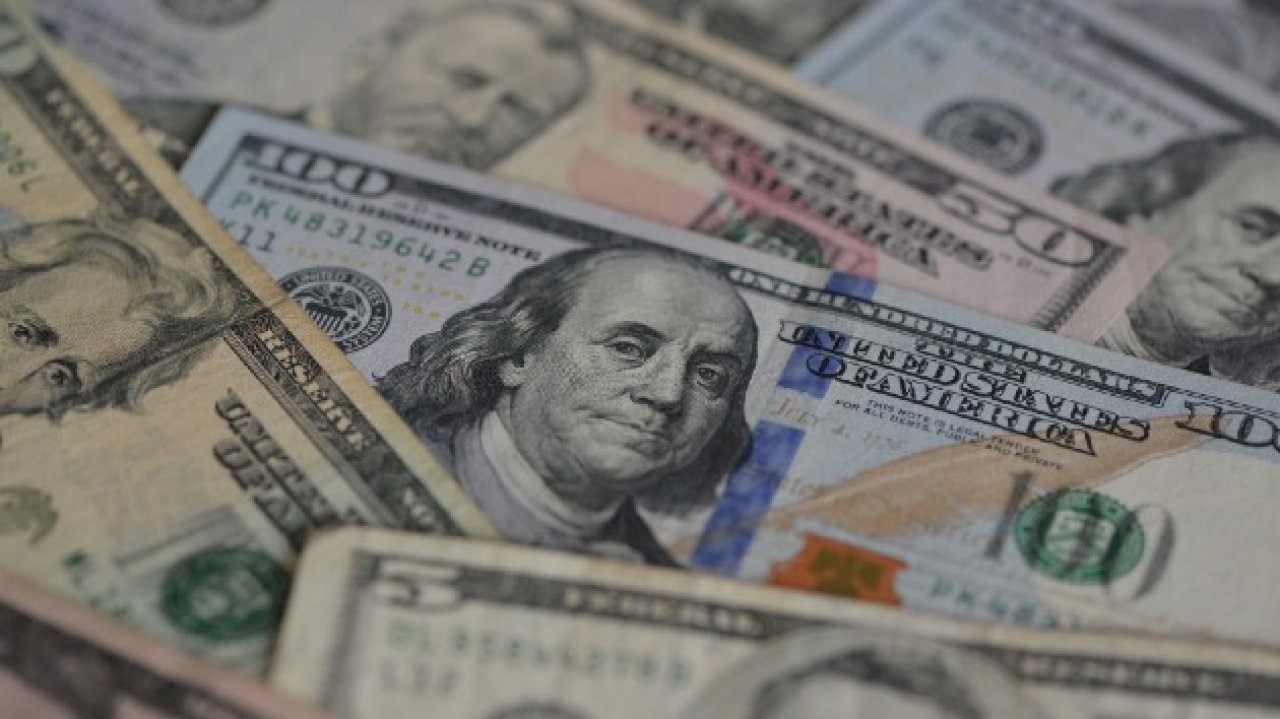Listeners:
Top listeners:
-
 play_arrow
play_arrow
94.3 Rev-FM The Rock of Texas | Where Texas Rocks
-
 play_arrow
play_arrow
99.1 The Buck Texas Country's Number 1 Country
-
 play_arrow
play_arrow
103.7 MikeFM Your Texas Hill Country Mix Tape
-
 play_arrow
play_arrow
KERV 1230 AM
-
 play_arrow
play_arrow
JAM Sports 1 JAM Broadcasting Sports 1
-
 play_arrow
play_arrow
JAM Sports 2 JAM Broadcasting Sports 2
US dollar is off to its worst start in 50 years. Here’s why that matters for you.

(NEW YORK) — The United States dollar is suffering its worst start to a year in more than five decades, likely triggering a price hike for some everyday items and a jump in expenses faced by travelers abroad, some analysts told ABC News.
The greenback has fallen more than 10% in value this year relative to a group of foreign currencies that belong to top U.S. trading partners.
Investors have fled U.S. dollars out of fear inflation could devalue the currency, especially as Congress has moved forward with a large spending bill set to worsen a decades-long trend of ballooning U.S. debt, analysts said.
Even more, they added, President Donald Trump’s fluctuating trade policy and sharp criticism of the Federal Reserve have prompted uncertainty about the nation’s economic stewardship, eroding trust in the dollar as the world’s preeminent “safe haven” asset.
Here’s what to know about the weakening of the U.S. dollar and what it means for you:
Why has the U.S. dollar weakened this year?
The value of the U.S. dollar – like most assets – is set by supply and demand.
For decades, the U.S. dollar has garnered eager demand due to the strength and stability of the U.S economy, which offers foreign investors a safe place to park their funds. In periods of global economic or political crisis, the U.S. dollar often receives a burst of interest from asset holders.
As a result, the value of the U.S. dollar has proven robust for generations.
The unusually sharp decline at the outset of this year owes in part to concern about a resurgence of inflation, which would reduce the spending power of the dollar and put downward pressure on its value, analysts said.
Trump’s tariff policy has stoked worry about price increases, since importers typically pass along a share of the tax burden in the form of higher prices. A potential increase in the national debt could also push up inflation, as the U.S. issues bonds to cover the cost burden.
“If I’m a central bank holding half a trillion dollars of U.S. Treasuries, essentially the value of that would decline with more inflation if I don’t take action now. If I think it might happen, I might shift to other assets like gold or the [Japanese] yen.”
Investors’ faith in the continued stability of the U.S. economy has also diminished, analysts said, pointing to growing U.S. debt, fluctuating tariffs and Trump’s attacks on the central bank.
Paolo Pasquariello, a professor of finance at the University of Michigan, attributed the decline of the dollar to “the recent erratic policy making by U.S. authorities.”
U.S. Treasuries, Pasquariello said, are no longer viewed as quite as safe an asset, meaning investors are less likely to “park their money during normal times and especially during times of distress.”
What does a weaker U.S. dollar mean for you?
A weaker U.S. dollar could result in higher prices for imported goods and steeper costs for travelers abroad, analysts said.
The anticipated rise in prices for U.S. consumers stems from the uptick in costs faced by importers paying for goods in U.S. currency. A foreign firm would likely demand a higher price since the dollars paid by a customer carry less purchasing power than they previously did, analysts said.
“If you’re buying light fixtures from a firm in India and they’re taking dollars, and they get fewer rupees for those dollars, they’re going to start to charge more dollars,” Richard Michelfelder, a professor of professional practice at Rutgers University, told ABC News.
The potential surge in the price of imports could compound the inflation risk posed by tariffs, analysts said, but the dollar-related price hike would hit just about every import entering the U.S.
“If you go online and buy a product that doesn’t come from the U.S., the price is likely to go up,” Michelfelder said.
A weaker dollar also means U.S. travelers abroad are likely to face higher costs since what’s in their pocket will exchange at a lower rate with foreign currencies, analysts said.
“If it takes more dollars to buy a euro and you’re going to Europe, everything you buy will cost more,” Michelfelder said.
The decline in the dollar does deliver some benefits, however. Foreign buyers face lower prices for purchasing U.S. goods, meaning exporters could receive a boost as their products become more competitive on the global market.
The favorable outcome for exporters could improve employment in industries like car manufacturing or advanced technology, while the relative strength of foreign currencies could bring additional tourists and expand the hospitality sector, Michelfelder said.
Copyright © 2025, ABC Audio. All rights reserved.
Written by: ABC News
Similar posts
-
Top popular

Ingram man charged with murder after fatal shooting

Kerr Crime Stoppers offering reward up to $5,000 for information in last week’s non-viable school threat

KISD asks parents to communicate with children about words and actions after ‘copy cat’ threat note found at middle school

City of Kerrville Parks and Recreation reminds citizens that a Red Flag Warning is in effect until further notice

City of Kerrville says that May 7 General and Special Elections will proceed



